World Sushi Cup champions Sky Tai and Leon Yap led media participants in a hands-on sushi-making class organised by the Norwegian Seafood Council at KDU University recently. Norwegian Ambassador Gunn Jorid Roset and Asbjorn Warvik Rortveit, Norwegian Seafood Council’s Regional Director, South-East Asia, also joined in the session, learning sushi-making techniques from the world-class sushi chefs.

Chef Sky Tai and Chef Leon Yap. Chef Leon presents his award-winning sushi that won him World Sushi Cup 2019

Chef Leon’s award-winning Negitoro with Shoyu Jelly and Ikura
Chef Leon Yap Wee Leong won the World Sushi Cup 2019 in Tokyo in August, while Chef Sky Tai Koon Siang was World Cup Sushi Cup champion for 2018. The two Malaysian chefs trained at the Global Sushi Academy run by the Norwegian Seafood Council in collaboration with World Sushi Skills Institute, the only officially recognised sushi body in Japan.
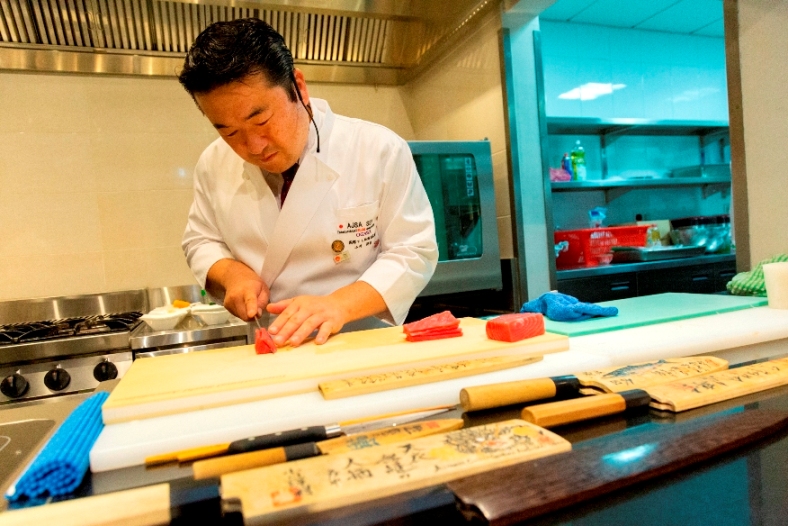
Sensei Ogawa shows how it’s done to sushi chefs training at the Global Sushi Academy
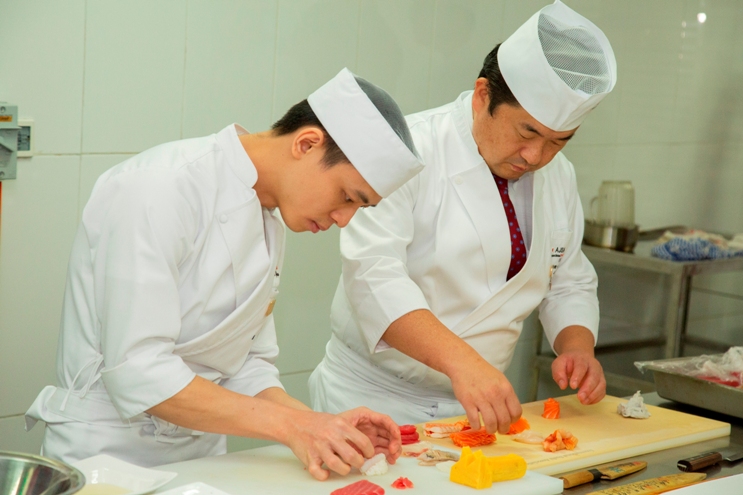
Chef Leon with Sensei Ogawa at the Global Sushi Academy session
The Global Sushi Academy training under renowned sushi master Hirotoshi Ogawa from Japan, aims at educating sushi chefs on the traditional art of sushi making and most importantly, the hygienic handling of raw seafood for consumption.

Ambassador Gunn Jorid Roset and Asbjorn with the sushi they made, topped with Norwegian salmon mayo

Chef Leon showing how to make sushi, with Chef Sky, watched by Asbjorn Warvik Rortveit, Ambassador Gunn Jorid Roset and media
Sensei Ogawa was training 20 Malaysian sushi chefs with at least three years of working experience on the same day as the hands-on sushi-making class for the media. Ogawa is director-general of the World Sushi Skills Institute (WSSI) and chief in charge of the World Sushi Cup.
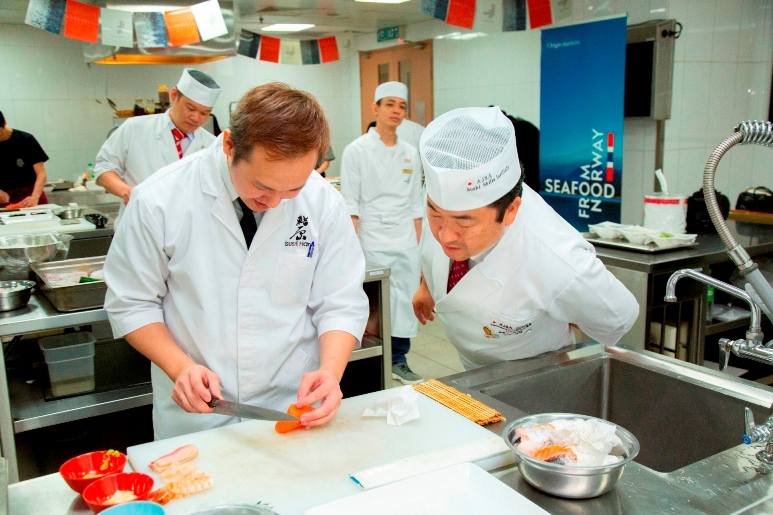
Sensei Ogawa takes a close look at the work of a sushi chef in his class
“Norwegian salmon has always been a very important part of Japanese cuisine,” said Asbjorn Warvik Rortveit. “It is the preferred choice of sushi topping in Malaysia. We do this Global Sushi Academy together with World Sushi Skill Institute every year. The Norwegian Seafood Council is committed to raising the standards of sushi chefs be it in terms of skill or safe food handling.”

Watch and learn from the two world-class sushi chefs Leon and Sky
In the sushi-making session with the media, Leon and Sky showed how the soft and gentle touch will turn out the perfect sushi and hand roll. But first, dip hands in water, then clap to get rid of excess water. “Grab sushi rice like you are counting money,” said Sky. “Squeeze into a ball. Lay it on the nori. Put some salmon mayo on top and wasabi insideand roll it into a cone shape.”

All hands on deck — at the sushi making class with media
Chef Leon’s award-winning Negitoro with Shoyu Jelly and Ikura as served at lunch, as well as Chef Sky’s Hamachi with Yuzu Miso Dressing that won him the champion title last year.
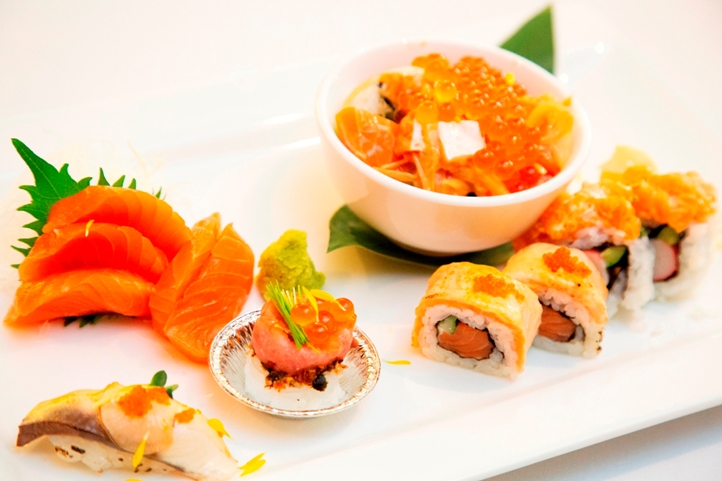
Lunch prepared by Sky and Leon with Norwegian salmon. Their two prize-winning sushi were in the lunch featuring Norwegian salmon
Norway exported 2.7 million tonnes of seafood in 2018, hitting a record of NOK 99 billion (RM45.54 billion). “If a dish of seafood is 200g, this translates into 37 meals of Norwegian seafood daily. If you put it as a sushi topping, this would mean 500 million sushi meals every day,” said Asbjorn.

Asbjorn presenting facts and figures on Norwegian salmon
He spoke about the sustainability of fisheries supplying food for the masses for many years to come. “Only 1.2kg of feed is required to produce 1kg of salmon, compared to 3kg of feed to produce 1kg of pork and 8kg of feed to produce 1kg of beef.”

Chef Sky’s award-winning sushi at World Sushi Cup 2018 — Hamachi with Yuzu Miso Dressing
In fact more seafood is the answer to future food security, according to a recent report presented at a UN conference in Rome about sustainable fisheries and ocean economy. Managed responsibly, the oceans can provide over six times more food than it does today.
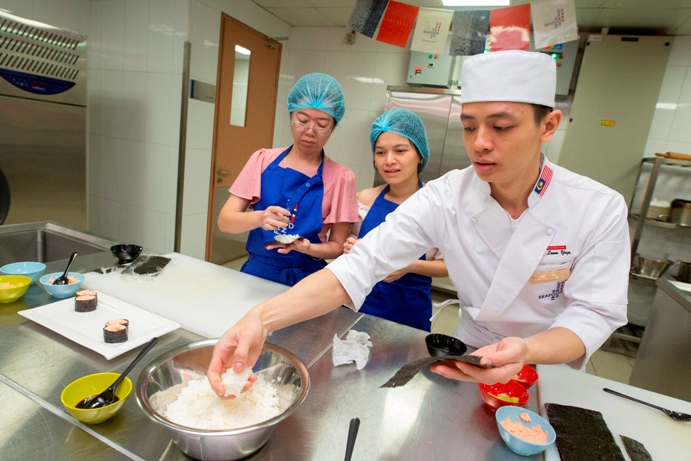
Chef Leon showing how to make sushi
This represents more than two thirds of the world’s future protein needs, and with a much lower carbon footprint than many other foods. Sustainable marine aquaculture – or mariculture – is highlighted as the area with the most potential for growth.
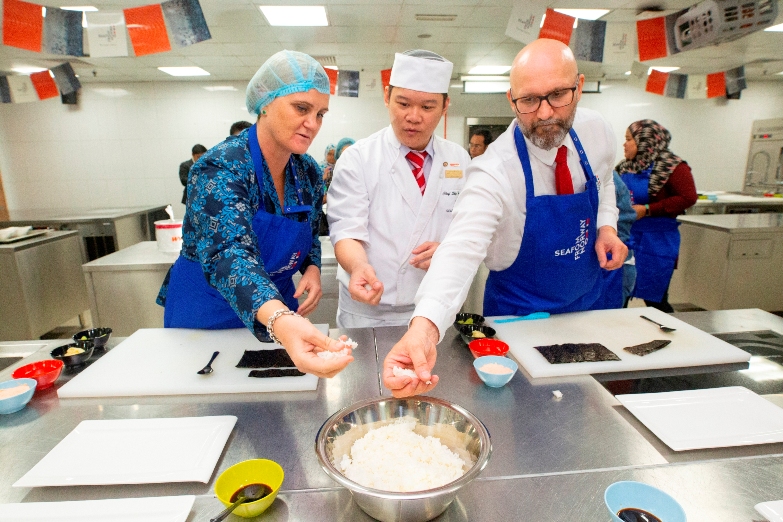
Chef Sky teaching the counting money technique in sushi making to Ambassador Gunn Jorid Roset and Asbjorn
Norwegian salmon has been ranked the most sustainable among world’s largest protein producers in the 2019 Coller FAIRR Protein Index which ranked 60 of the world’s largest publicly-listed protein producers on how they perform on sustainability.
(2019 Coller FAIRR report ranks Norwegian salmon most sustainable among world’s largest protein producers) — http://www.mynewsdesk.com/seafood/pressreleases/norwegian-salmon-ranked-most-sustainable-among-worlds-largest-protein-producers-2915188
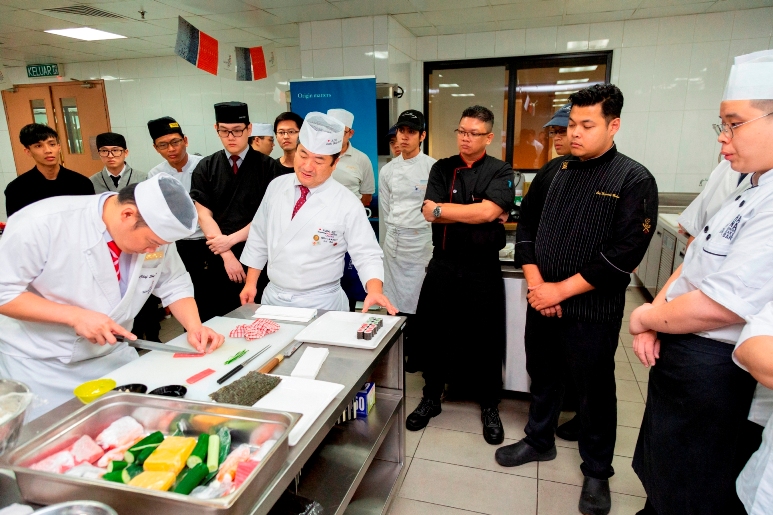
Chef Sky slicing the fish, watched by sensei Ogawa

